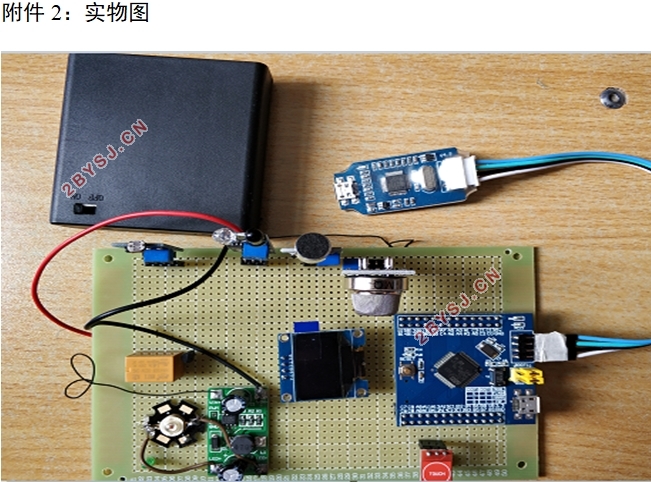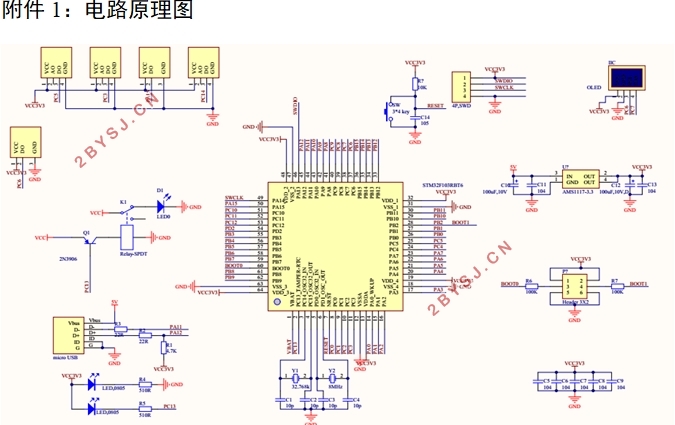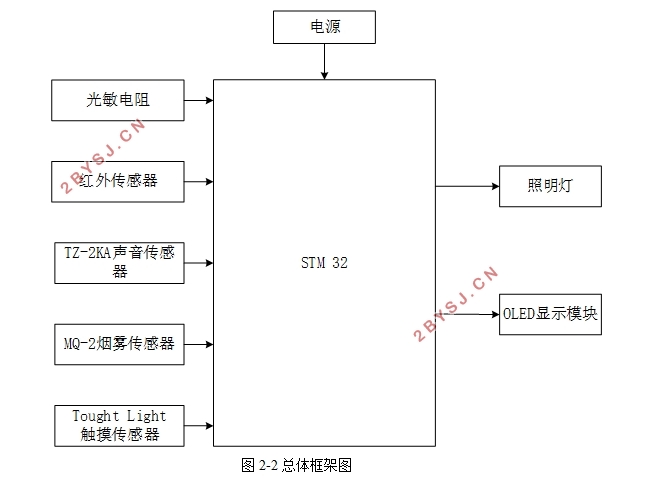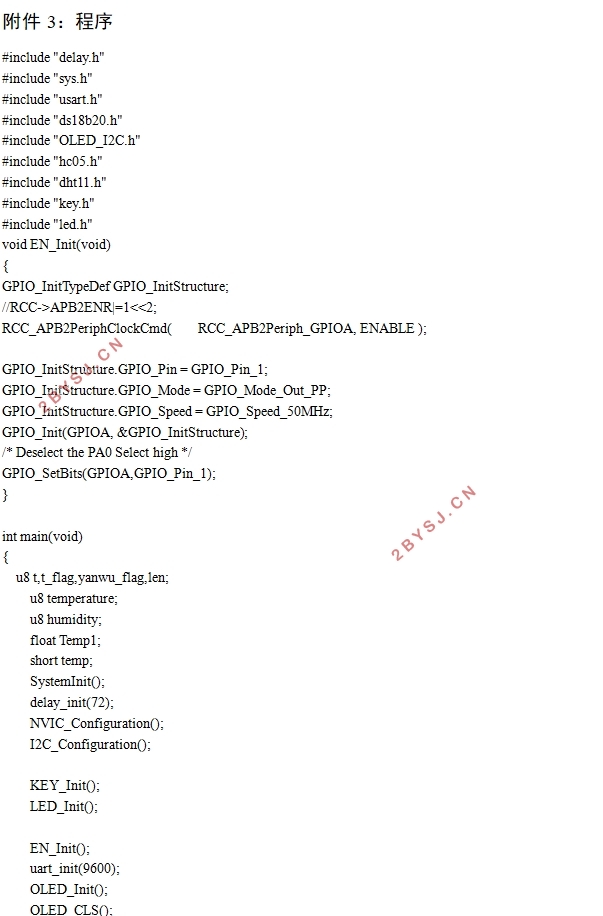基于STM32的光、声、触摸三控智能照明灯设计
无需注册登录,支付后按照提示操作即可获取该资料.
基于STM32的光、声、触摸三控智能照明灯设计(论文12000字)
摘要:在当今社会,经济高速发展,智能化已成为科学技术发展的一种趋势。智能照明灯能够在白天自动熄灭,晚上有人经过时亮起照明,并且无论在白天还是晚上都能够通过触摸控制照明灯,有着低耗环保、灵敏稳定、寿命长、方便生活的特点。本文主要介绍了简易的基于STM32声光触摸三控智能照明灯的设计与制作。该设计主要使用光敏电阻传感器,声学传感器和其他传感器将物理信号转换为电信号。并对电信号进行适当的放大和整形处理,然后将处理后的信号传送给STM32微控制器。根据信号电平的高低来决定继电器的启闭,以控制灯光的开启和关闭。在设计过程中,Altium Designer软件用于设计电路原理图,并对电路功能进行了测试。
关键词:智能照明灯、光敏电阻、传感器、STM32单片机
STM32-based light, sound and touch three-control intelligent lighting
Abstract: In today’s society,the rapid economic development,people’s quality requirements for life continue to increase,and intelligence has become a trend in the development of science and technology. Intelligent lighting can be automatically extinguished during the day and lights up when someone passes by in the evening,and can control lighting by touch during the daytime or nighttime. It has the characteristics of low consumption,environmental protection,stability,stability,long life, and convenient life. This article mainly introduces the simple design and production of STM32 sound and light touch three-control intelligent lighting. This design mainly uses light- sensitive resistance sensors,voice- activated sensors,and touch sensors. The smoke sensor converts optical signals,sound signals,touch signals,and smoke signals into electrical signals, and amplifies and reshapes electrical signals,and then transmits the processed signals to STM32 single-chip microcomputer,accoring to the level of the signal level to determine the opening and closing of the relay,thereby controlling the light on and off. In the design process, Altium Designer software was used to design the circuit schematic, simulate the circuit, and test the circuit function.
Keywords:intelligent lighting, light-sensitive resistors, sensors, STM32 microcontroller




目录
1 绪论 1
1.1 研究背景 1
1.2 课题研究目的和意义 1
1.2.1 研究目的 1
1.2.2 国内外现状 2
1.3 论文内容简介 2
1.4 本章小结 2
2 系统整体设计 3
2.1 设计任务分析 3
2.2 系统方案设计 3
2.3 系统方案论证 3
2.3.1 单片机选型 3
2.3.2 红外传感器模块选用 4
2.3.3 光敏传感器模块的选用 4
2.3.4 声音传感器模块的选用 5
2.3.5 触摸传感器模块选用 5
2.4 设计功能及框图 5
2.4.1 系统设计功能 5
2.4.1 系统工作原理 6
2.4.2 系统总体框图 6
2.3 本章小结 6
3 系统硬件设计 7
3.1 STM32单片机 7
3.2 红外传感器模块设计 7
3.3 光敏传感器模块设计 8
3.4 声音传感模块的设计 8
3.5 触摸传感模块设计 9
3.6 烟雾传感模块设计 10
3.7 其他元器件 10
3.7.1 继电器 10
3.7.2 液晶显示屏 11
3.8 本章小结 11
4系统软件 11
4.1 系统总流程 11
4.2 烟雾模块流程 12
4.3 触摸模块流程 13
4.4 声光组合控制流程 13
5 焊接与调试 14
5.1 电路焊接 14
5.2 电路调试 14
5.2.1 触摸控制调试 14
5.2.2 烟雾控制调试 15
5.2.3 声光组合控制调试 16
5.3 本章小结 16
6 总结与展望 17
6.1 论文总结 17
6.2 对设计的思考与展望 17
6.3 本章小结 17
参考文献 18
致谢 19
附件1电路原理图 20
附件2实物图 20
附件3程序 22
